-
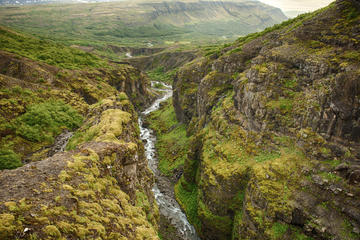 Glymur
Glymur Iceland’s second-highest waterfall has a drop of 198 m (650 ft) and is located in the Botnsdalur Valley near Hvalfjörður (Whale Fjord) northeast of Reykjavik. Fed by the deep lake of Hvalvatn, the crystal-clear waters of the Botnsá River flow xx and its spindly cascade flings itself over sh
Glymur
Glymur Iceland’s second-highest waterfall has a drop of 198 m (650 ft) and is located in the Botnsdalur Valley near Hvalfjörður (Whale Fjord) northeast of Reykjavik. Fed by the deep lake of Hvalvatn, the crystal-clear waters of the Botnsá River flow xx and its spindly cascade flings itself over sh
-
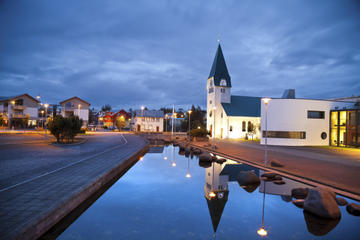 Hafnarfjordur
Hafnarfjordur With its natural fjords encircled by lava fields and bustling port bobbing with fishing boats, Hafnafjörður makes a lively alternative to neighboring Reykjavík and at just a 20-minute drive from the capital, it’s become a popular retreat for both locals and tourists. As the gateway t
Hafnarfjordur
Hafnarfjordur With its natural fjords encircled by lava fields and bustling port bobbing with fishing boats, Hafnafjörður makes a lively alternative to neighboring Reykjavík and at just a 20-minute drive from the capital, it’s become a popular retreat for both locals and tourists. As the gateway t
-
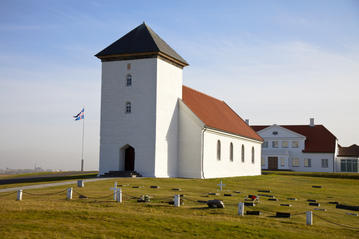 Bessastadir
Bessastadir One of Iceland’s most impressive buildings, located in Alftanes, just outside Reykjavik, the Bessastadir is the official residence of the Icelandic president. Dating back to 1761, the striking edifice once housed one of Iceland’s first educational institutions, before being donated to
Bessastadir
Bessastadir One of Iceland’s most impressive buildings, located in Alftanes, just outside Reykjavik, the Bessastadir is the official residence of the Icelandic president. Dating back to 1761, the striking edifice once housed one of Iceland’s first educational institutions, before being donated to
-
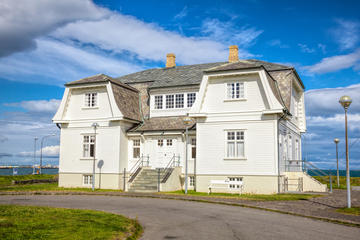 Hofdi House
Hofdi House The Hofdi House in Iceland is considered to be one of the most historically significant buildings in the Reykjavik area. This beautiful building was built in 1909 and sits near the waterfront. Originally it served as the location for the French consul and there are still signs of this
Hofdi House
Hofdi House The Hofdi House in Iceland is considered to be one of the most historically significant buildings in the Reykjavik area. This beautiful building was built in 1909 and sits near the waterfront. Originally it served as the location for the French consul and there are still signs of this
-
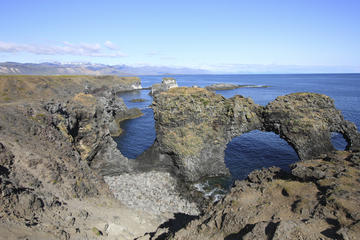 Faxafloi Bay
Faxafloi Bay Snuggled between the peninsulas of Snæfellsnes and Reykjanes in Southwest Iceland, Faxafloi Bay has always held economic and culinary importance to Icelanders thanks to its enviable location on the shore. Back in the day, fishermen used to catch rations that would feed entire villages
Faxafloi Bay
Faxafloi Bay Snuggled between the peninsulas of Snæfellsnes and Reykjanes in Southwest Iceland, Faxafloi Bay has always held economic and culinary importance to Icelanders thanks to its enviable location on the shore. Back in the day, fishermen used to catch rations that would feed entire villages
-
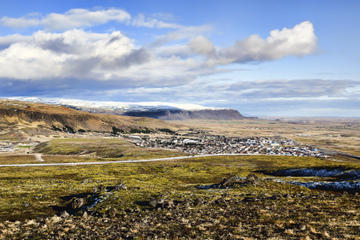 Hveragerdi
Hveragerdi One of the final stops on South Iceland’s famous Golden Circle route and just 45 km from Reykjavik, the green-living town of Hveragerdi harbors a wealth of geothermic wonders. Located on an active volcanic zone, the steaming landscape of Hveragerdi sprawls along a 5,000 year-old lava fi
Hveragerdi
Hveragerdi One of the final stops on South Iceland’s famous Golden Circle route and just 45 km from Reykjavik, the green-living town of Hveragerdi harbors a wealth of geothermic wonders. Located on an active volcanic zone, the steaming landscape of Hveragerdi sprawls along a 5,000 year-old lava fi
-
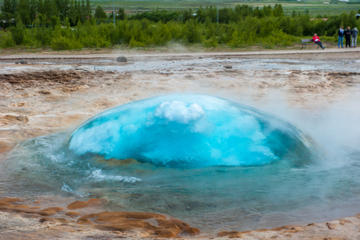 Strokkur
Strokkur The landmark Geysir Geyser might be the world’s most famous and the one after which all others are named, but its neighbor, Strokkur, is equally impressive. Despite only rising to heights of 60 to 100 feet (compared to Geysir’s 150 to 200 feet), Strokkur still erupts several times an hour
Strokkur
Strokkur The landmark Geysir Geyser might be the world’s most famous and the one after which all others are named, but its neighbor, Strokkur, is equally impressive. Despite only rising to heights of 60 to 100 feet (compared to Geysir’s 150 to 200 feet), Strokkur still erupts several times an hour
-
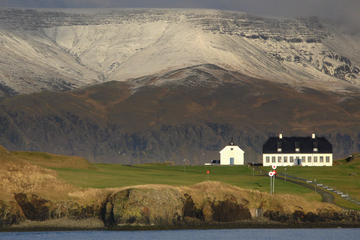 Videy Island
Videy Island Across the water from Reykjavik lies Videy Island. Once the main harbor until Reykjavik took over in 1943, the first settlement on the island dates from the 10th century. These days birds are the main inhabitants of the island with around 30 species coming to breed there. For humans,
Videy Island
Videy Island Across the water from Reykjavik lies Videy Island. Once the main harbor until Reykjavik took over in 1943, the first settlement on the island dates from the 10th century. These days birds are the main inhabitants of the island with around 30 species coming to breed there. For humans,
-
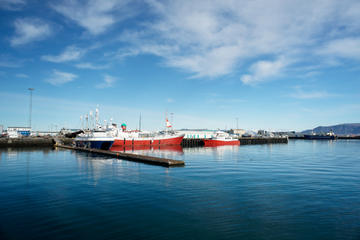 Reykjavik Cruise Port
Reykjavik Cruise Port Reykjavik is the capital and largest city of Iceland at around 120,000 people, which comprises half the country’s total population. Although it was the site of the country’s first permanent settlement dating from around 870, there was no actual city here until 1786. Since the
Reykjavik Cruise Port
Reykjavik Cruise Port Reykjavik is the capital and largest city of Iceland at around 120,000 people, which comprises half the country’s total population. Although it was the site of the country’s first permanent settlement dating from around 870, there was no actual city here until 1786. Since the
-
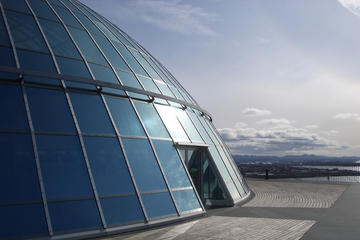 The Pearl (Perlan)
The Pearl (Perlan) Perlan (The Pearl in English) is a spectacular landmark which overlooks Reykjavik and can be seen for miles around. Dating from 1991, it is actually a water storage facility (for the geothermal water that comes out of the earth here and supplies the city with its hot water) with
The Pearl (Perlan)
The Pearl (Perlan) Perlan (The Pearl in English) is a spectacular landmark which overlooks Reykjavik and can be seen for miles around. Dating from 1991, it is actually a water storage facility (for the geothermal water that comes out of the earth here and supplies the city with its hot water) with
-
 Hallgrimurs Church (Hallgrimskirkja)
Hallgrimurs Church (Hallgrimskirkja) Reykjavíks most attention-seeking building is the immense concrete church Hallgrímskirkja, or Hallgrimurs Church, star of a thousand postcards and visible from 12 miles (20 kilometers) away. For an unmissable view of the city, make sure you take an elevator tri
Hallgrimurs Church (Hallgrimskirkja)
Hallgrimurs Church (Hallgrimskirkja) Reykjavíks most attention-seeking building is the immense concrete church Hallgrímskirkja, or Hallgrimurs Church, star of a thousand postcards and visible from 12 miles (20 kilometers) away. For an unmissable view of the city, make sure you take an elevator tri
-
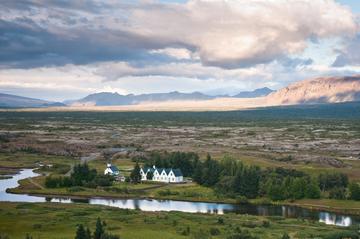 Thingvellir National Park
Thingvellir National Park This rocky, hilly volcanic landscape in the southwestern countryside was made Iceland’s first national park in 1928, and a UNESCO site in 2004. A deeply significant cultural site for Iceland, this is where Althing, a historic open-air assembly of Icelandic representatives
Thingvellir National Park
Thingvellir National Park This rocky, hilly volcanic landscape in the southwestern countryside was made Iceland’s first national park in 1928, and a UNESCO site in 2004. A deeply significant cultural site for Iceland, this is where Althing, a historic open-air assembly of Icelandic representatives
-
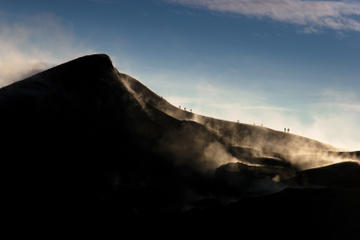 Fimmvörðuháls Volcano
Fimmvörðuháls Volcano Positioned right between the Eyjafjallajökull and Mýrdalsjökull glaciers in southern Iceland, Fimmvörðuháls roughly consists of a 25-kilometer-long and 1,000-meter-high pass accessible to visitors between mid-June and late-August. Its location makes it one of the most sought-
Fimmvörðuháls Volcano
Fimmvörðuháls Volcano Positioned right between the Eyjafjallajökull and Mýrdalsjökull glaciers in southern Iceland, Fimmvörðuháls roughly consists of a 25-kilometer-long and 1,000-meter-high pass accessible to visitors between mid-June and late-August. Its location makes it one of the most sought-
-
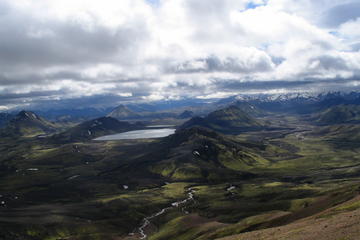 Thórsmörk (Thors Woods)
Thórsmörk (Thors Woods) Aptly named after the Norse god of strength and storms, this mountain range is frequently featured in “most stunning landscapes on the planet” lists. It therefore doesn’t come as a surprise that Thórsmörk is one of the top hiking spots in Iceland, nestled between the Mýrdal
Thórsmörk (Thors Woods)
Thórsmörk (Thors Woods) Aptly named after the Norse god of strength and storms, this mountain range is frequently featured in “most stunning landscapes on the planet” lists. It therefore doesn’t come as a surprise that Thórsmörk is one of the top hiking spots in Iceland, nestled between the Mýrdal
-
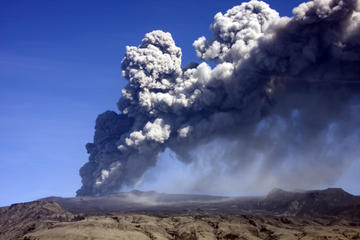 Eyjafjallajökull Volcano
Eyjafjallajökull Volcano Iceland has no shortage of active volcanoes, but the notoriously difficult-to-pronounce Eyjafjallajokull Volcano is among the most famous, making headlines around the world when it erupted on April 14, 2010, covering much of Europe’s airspace in a cloud of volcanic ash and
Eyjafjallajökull Volcano
Eyjafjallajökull Volcano Iceland has no shortage of active volcanoes, but the notoriously difficult-to-pronounce Eyjafjallajokull Volcano is among the most famous, making headlines around the world when it erupted on April 14, 2010, covering much of Europe’s airspace in a cloud of volcanic ash and
-
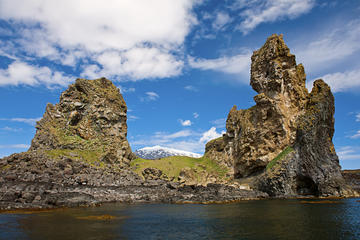 Snaefellsjokull National Park
Snaefellsjokull National Park Snæfellsjökull National Park is located in the westernmost part of the Snæfellsnes peninsula, and is one of the top tourist destinations in Iceland. It is the only Icelandic national park to extend to the seashore — most of the coastline is home to luxuriant flora and
Snaefellsjokull National Park
Snaefellsjokull National Park Snæfellsjökull National Park is located in the westernmost part of the Snæfellsnes peninsula, and is one of the top tourist destinations in Iceland. It is the only Icelandic national park to extend to the seashore — most of the coastline is home to luxuriant flora and
-
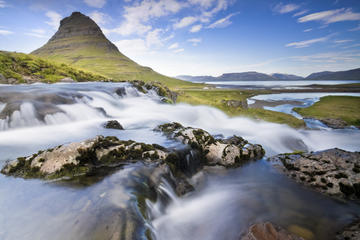 Reykjanes Peninsula
Reykjanes Peninsula Jutting out from Iceland’s southwest coast and a popular choice for a day trip from nearby Reykjavík, the Reykjanes Peninsula is home to some of the country’s most beguiling landscapes—a patchwork of rugged lava fields, soaring sea cliffs and steamy hot pools.Heading south from
Reykjanes Peninsula
Reykjanes Peninsula Jutting out from Iceland’s southwest coast and a popular choice for a day trip from nearby Reykjavík, the Reykjanes Peninsula is home to some of the country’s most beguiling landscapes—a patchwork of rugged lava fields, soaring sea cliffs and steamy hot pools.Heading south from
-
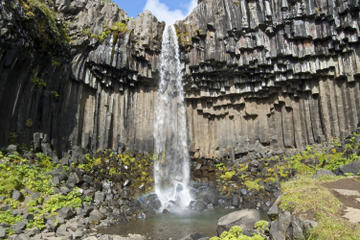 Skaftafell National Park
Skaftafell National Park Established in 1967, Skaftafell National Park became a part of the enormous Vatnajokull National Park in 2008, but the area, which sprawls across the southern tip of the vast Vatnajokull glacier, still remains one of the most popular corners of the park. Skaftafell is domi
Skaftafell National Park
Skaftafell National Park Established in 1967, Skaftafell National Park became a part of the enormous Vatnajokull National Park in 2008, but the area, which sprawls across the southern tip of the vast Vatnajokull glacier, still remains one of the most popular corners of the park. Skaftafell is domi
-
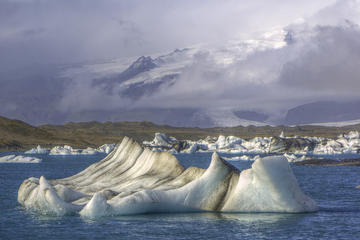 Jokulsarlon Lagoon
Jokulsarlon Lagoon The largest and best known of Icelands glacial lakes, Jokulsarlon Lagoon is in the south of the country at the end of the Vatnajokull glacier. The lagoon first appeared around 1935 and has been growing ever since with the accelerating melting of the glacier. These days it looks
Jokulsarlon Lagoon
Jokulsarlon Lagoon The largest and best known of Icelands glacial lakes, Jokulsarlon Lagoon is in the south of the country at the end of the Vatnajokull glacier. The lagoon first appeared around 1935 and has been growing ever since with the accelerating melting of the glacier. These days it looks
-
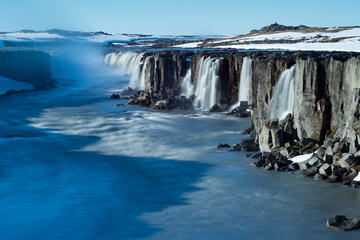 Vatnajokull National Park
Vatnajokull National Park Covering an area of 12,000 square-kilometers and encompassing the former National Parks of Jökulsárgljúfur and Skaftafell, Vatnajokull National Park has been collecting superlatives since it was established in 2008. The park is now Western Europe’s largest national park (
Vatnajokull National Park
Vatnajokull National Park Covering an area of 12,000 square-kilometers and encompassing the former National Parks of Jökulsárgljúfur and Skaftafell, Vatnajokull National Park has been collecting superlatives since it was established in 2008. The park is now Western Europe’s largest national park (
Total
376 -travel
FirstPage PreviousPage NextPage LastPage CurrentPage:
2/19 20-travel/Page Goto:
 Glymur
Glymur Iceland’s second-highest waterfall has a drop of 198 m (650 ft) and is located in the Botnsdalur Valley near Hvalfjörður (Whale Fjord) northeast of Reykjavik. Fed by the deep lake of Hvalvatn, the crystal-clear waters of the Botnsá River flow xx and its spindly cascade flings itself over sh
Glymur
Glymur Iceland’s second-highest waterfall has a drop of 198 m (650 ft) and is located in the Botnsdalur Valley near Hvalfjörður (Whale Fjord) northeast of Reykjavik. Fed by the deep lake of Hvalvatn, the crystal-clear waters of the Botnsá River flow xx and its spindly cascade flings itself over sh
 Hafnarfjordur
Hafnarfjordur With its natural fjords encircled by lava fields and bustling port bobbing with fishing boats, Hafnafjörður makes a lively alternative to neighboring Reykjavík and at just a 20-minute drive from the capital, it’s become a popular retreat for both locals and tourists. As the gateway t
Hafnarfjordur
Hafnarfjordur With its natural fjords encircled by lava fields and bustling port bobbing with fishing boats, Hafnafjörður makes a lively alternative to neighboring Reykjavík and at just a 20-minute drive from the capital, it’s become a popular retreat for both locals and tourists. As the gateway t
 Bessastadir
Bessastadir One of Iceland’s most impressive buildings, located in Alftanes, just outside Reykjavik, the Bessastadir is the official residence of the Icelandic president. Dating back to 1761, the striking edifice once housed one of Iceland’s first educational institutions, before being donated to
Bessastadir
Bessastadir One of Iceland’s most impressive buildings, located in Alftanes, just outside Reykjavik, the Bessastadir is the official residence of the Icelandic president. Dating back to 1761, the striking edifice once housed one of Iceland’s first educational institutions, before being donated to
 Hofdi House
Hofdi House The Hofdi House in Iceland is considered to be one of the most historically significant buildings in the Reykjavik area. This beautiful building was built in 1909 and sits near the waterfront. Originally it served as the location for the French consul and there are still signs of this
Hofdi House
Hofdi House The Hofdi House in Iceland is considered to be one of the most historically significant buildings in the Reykjavik area. This beautiful building was built in 1909 and sits near the waterfront. Originally it served as the location for the French consul and there are still signs of this
 Faxafloi Bay
Faxafloi Bay Snuggled between the peninsulas of Snæfellsnes and Reykjanes in Southwest Iceland, Faxafloi Bay has always held economic and culinary importance to Icelanders thanks to its enviable location on the shore. Back in the day, fishermen used to catch rations that would feed entire villages
Faxafloi Bay
Faxafloi Bay Snuggled between the peninsulas of Snæfellsnes and Reykjanes in Southwest Iceland, Faxafloi Bay has always held economic and culinary importance to Icelanders thanks to its enviable location on the shore. Back in the day, fishermen used to catch rations that would feed entire villages
 Hveragerdi
Hveragerdi One of the final stops on South Iceland’s famous Golden Circle route and just 45 km from Reykjavik, the green-living town of Hveragerdi harbors a wealth of geothermic wonders. Located on an active volcanic zone, the steaming landscape of Hveragerdi sprawls along a 5,000 year-old lava fi
Hveragerdi
Hveragerdi One of the final stops on South Iceland’s famous Golden Circle route and just 45 km from Reykjavik, the green-living town of Hveragerdi harbors a wealth of geothermic wonders. Located on an active volcanic zone, the steaming landscape of Hveragerdi sprawls along a 5,000 year-old lava fi
 Strokkur
Strokkur The landmark Geysir Geyser might be the world’s most famous and the one after which all others are named, but its neighbor, Strokkur, is equally impressive. Despite only rising to heights of 60 to 100 feet (compared to Geysir’s 150 to 200 feet), Strokkur still erupts several times an hour
Strokkur
Strokkur The landmark Geysir Geyser might be the world’s most famous and the one after which all others are named, but its neighbor, Strokkur, is equally impressive. Despite only rising to heights of 60 to 100 feet (compared to Geysir’s 150 to 200 feet), Strokkur still erupts several times an hour
 Videy Island
Videy Island Across the water from Reykjavik lies Videy Island. Once the main harbor until Reykjavik took over in 1943, the first settlement on the island dates from the 10th century. These days birds are the main inhabitants of the island with around 30 species coming to breed there. For humans,
Videy Island
Videy Island Across the water from Reykjavik lies Videy Island. Once the main harbor until Reykjavik took over in 1943, the first settlement on the island dates from the 10th century. These days birds are the main inhabitants of the island with around 30 species coming to breed there. For humans,
 Reykjavik Cruise Port
Reykjavik Cruise Port Reykjavik is the capital and largest city of Iceland at around 120,000 people, which comprises half the country’s total population. Although it was the site of the country’s first permanent settlement dating from around 870, there was no actual city here until 1786. Since the
Reykjavik Cruise Port
Reykjavik Cruise Port Reykjavik is the capital and largest city of Iceland at around 120,000 people, which comprises half the country’s total population. Although it was the site of the country’s first permanent settlement dating from around 870, there was no actual city here until 1786. Since the
 The Pearl (Perlan)
The Pearl (Perlan) Perlan (The Pearl in English) is a spectacular landmark which overlooks Reykjavik and can be seen for miles around. Dating from 1991, it is actually a water storage facility (for the geothermal water that comes out of the earth here and supplies the city with its hot water) with
The Pearl (Perlan)
The Pearl (Perlan) Perlan (The Pearl in English) is a spectacular landmark which overlooks Reykjavik and can be seen for miles around. Dating from 1991, it is actually a water storage facility (for the geothermal water that comes out of the earth here and supplies the city with its hot water) with
 Hallgrimurs Church (Hallgrimskirkja)
Hallgrimurs Church (Hallgrimskirkja) Reykjavíks most attention-seeking building is the immense concrete church Hallgrímskirkja, or Hallgrimurs Church, star of a thousand postcards and visible from 12 miles (20 kilometers) away. For an unmissable view of the city, make sure you take an elevator tri
Hallgrimurs Church (Hallgrimskirkja)
Hallgrimurs Church (Hallgrimskirkja) Reykjavíks most attention-seeking building is the immense concrete church Hallgrímskirkja, or Hallgrimurs Church, star of a thousand postcards and visible from 12 miles (20 kilometers) away. For an unmissable view of the city, make sure you take an elevator tri
 Thingvellir National Park
Thingvellir National Park This rocky, hilly volcanic landscape in the southwestern countryside was made Iceland’s first national park in 1928, and a UNESCO site in 2004. A deeply significant cultural site for Iceland, this is where Althing, a historic open-air assembly of Icelandic representatives
Thingvellir National Park
Thingvellir National Park This rocky, hilly volcanic landscape in the southwestern countryside was made Iceland’s first national park in 1928, and a UNESCO site in 2004. A deeply significant cultural site for Iceland, this is where Althing, a historic open-air assembly of Icelandic representatives
 Fimmvörðuháls Volcano
Fimmvörðuháls Volcano Positioned right between the Eyjafjallajökull and Mýrdalsjökull glaciers in southern Iceland, Fimmvörðuháls roughly consists of a 25-kilometer-long and 1,000-meter-high pass accessible to visitors between mid-June and late-August. Its location makes it one of the most sought-
Fimmvörðuháls Volcano
Fimmvörðuháls Volcano Positioned right between the Eyjafjallajökull and Mýrdalsjökull glaciers in southern Iceland, Fimmvörðuháls roughly consists of a 25-kilometer-long and 1,000-meter-high pass accessible to visitors between mid-June and late-August. Its location makes it one of the most sought-
 Thórsmörk (Thors Woods)
Thórsmörk (Thors Woods) Aptly named after the Norse god of strength and storms, this mountain range is frequently featured in “most stunning landscapes on the planet” lists. It therefore doesn’t come as a surprise that Thórsmörk is one of the top hiking spots in Iceland, nestled between the Mýrdal
Thórsmörk (Thors Woods)
Thórsmörk (Thors Woods) Aptly named after the Norse god of strength and storms, this mountain range is frequently featured in “most stunning landscapes on the planet” lists. It therefore doesn’t come as a surprise that Thórsmörk is one of the top hiking spots in Iceland, nestled between the Mýrdal
 Eyjafjallajökull Volcano
Eyjafjallajökull Volcano Iceland has no shortage of active volcanoes, but the notoriously difficult-to-pronounce Eyjafjallajokull Volcano is among the most famous, making headlines around the world when it erupted on April 14, 2010, covering much of Europe’s airspace in a cloud of volcanic ash and
Eyjafjallajökull Volcano
Eyjafjallajökull Volcano Iceland has no shortage of active volcanoes, but the notoriously difficult-to-pronounce Eyjafjallajokull Volcano is among the most famous, making headlines around the world when it erupted on April 14, 2010, covering much of Europe’s airspace in a cloud of volcanic ash and
 Snaefellsjokull National Park
Snaefellsjokull National Park Snæfellsjökull National Park is located in the westernmost part of the Snæfellsnes peninsula, and is one of the top tourist destinations in Iceland. It is the only Icelandic national park to extend to the seashore — most of the coastline is home to luxuriant flora and
Snaefellsjokull National Park
Snaefellsjokull National Park Snæfellsjökull National Park is located in the westernmost part of the Snæfellsnes peninsula, and is one of the top tourist destinations in Iceland. It is the only Icelandic national park to extend to the seashore — most of the coastline is home to luxuriant flora and
 Reykjanes Peninsula
Reykjanes Peninsula Jutting out from Iceland’s southwest coast and a popular choice for a day trip from nearby Reykjavík, the Reykjanes Peninsula is home to some of the country’s most beguiling landscapes—a patchwork of rugged lava fields, soaring sea cliffs and steamy hot pools.Heading south from
Reykjanes Peninsula
Reykjanes Peninsula Jutting out from Iceland’s southwest coast and a popular choice for a day trip from nearby Reykjavík, the Reykjanes Peninsula is home to some of the country’s most beguiling landscapes—a patchwork of rugged lava fields, soaring sea cliffs and steamy hot pools.Heading south from
 Skaftafell National Park
Skaftafell National Park Established in 1967, Skaftafell National Park became a part of the enormous Vatnajokull National Park in 2008, but the area, which sprawls across the southern tip of the vast Vatnajokull glacier, still remains one of the most popular corners of the park. Skaftafell is domi
Skaftafell National Park
Skaftafell National Park Established in 1967, Skaftafell National Park became a part of the enormous Vatnajokull National Park in 2008, but the area, which sprawls across the southern tip of the vast Vatnajokull glacier, still remains one of the most popular corners of the park. Skaftafell is domi
 Jokulsarlon Lagoon
Jokulsarlon Lagoon The largest and best known of Icelands glacial lakes, Jokulsarlon Lagoon is in the south of the country at the end of the Vatnajokull glacier. The lagoon first appeared around 1935 and has been growing ever since with the accelerating melting of the glacier. These days it looks
Jokulsarlon Lagoon
Jokulsarlon Lagoon The largest and best known of Icelands glacial lakes, Jokulsarlon Lagoon is in the south of the country at the end of the Vatnajokull glacier. The lagoon first appeared around 1935 and has been growing ever since with the accelerating melting of the glacier. These days it looks
 Vatnajokull National Park
Vatnajokull National Park Covering an area of 12,000 square-kilometers and encompassing the former National Parks of Jökulsárgljúfur and Skaftafell, Vatnajokull National Park has been collecting superlatives since it was established in 2008. The park is now Western Europe’s largest national park (
Vatnajokull National Park
Vatnajokull National Park Covering an area of 12,000 square-kilometers and encompassing the former National Parks of Jökulsárgljúfur and Skaftafell, Vatnajokull National Park has been collecting superlatives since it was established in 2008. The park is now Western Europe’s largest national park (